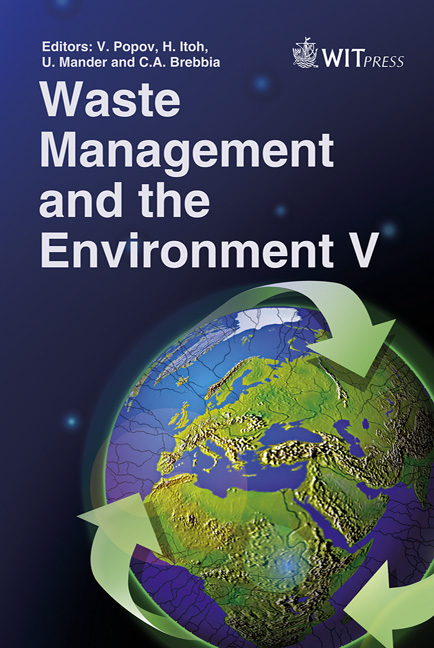A Comparative Analysis Of Communal Waste Collection Options For Mafikeng City Council
Price
Free (open access)
Transaction
Volume
140
Pages
10
Page Range
215 - 224
Published
2010
Size
396 kb
Paper DOI
10.2495/WM100201
Copyright
WIT Press
Author(s)
F. R. Kizza Kadama
Abstract
This study examined the method of communal waste collection (CWC) practiced in Mafikeng city. It noted that a number of malpractices at CWC points have resulted in undesirable socio-economic impacts, which have prompted the need for the adoption of a new method of practice. The study proposed an alternative method and developed projected income statements, which were evaluated to determine whether to accept or reject the proposed method. All evaluations were in favour of adopting the proposed method. It was therefore the unequivocal recommendation of this study to reject the current method of CWC and accept the proposed method. Keywords: cash inflow, projected income statements. 1 Introduction The city of Mafikeng is located in Mafikeng Local Municipality (MLM) in the North West (NW) province of South Africa. According to MLM [1], it covers about 25% of the 3703 sq. km of the municipality. Over the years, the population of Mafikeng has steadily increased. Available statistics indicate that the population increased from 43395 in 1996 to 47887 in 2001, while the number of households increased from 11679 to 15921 during the same period (Statistics South Africa; [2] and [3]). From these statistics, it was computed that between 1996 and 2001, the population and number of households in Mafikeng city increased at a rate of about 2% and 7% per year, respectively. The city is administered by the Mafikeng City Council (MCC) which provides its residents with municipal services such as waste removal, street lighting, water, electricity, sewerage services and storm water drainage (Statistics
Keywords
cash inflow, projected income statements





